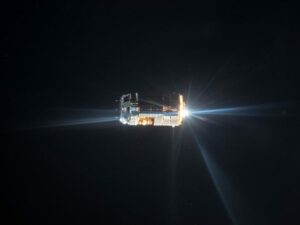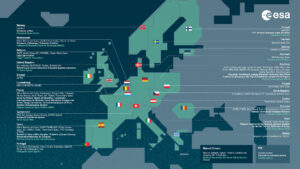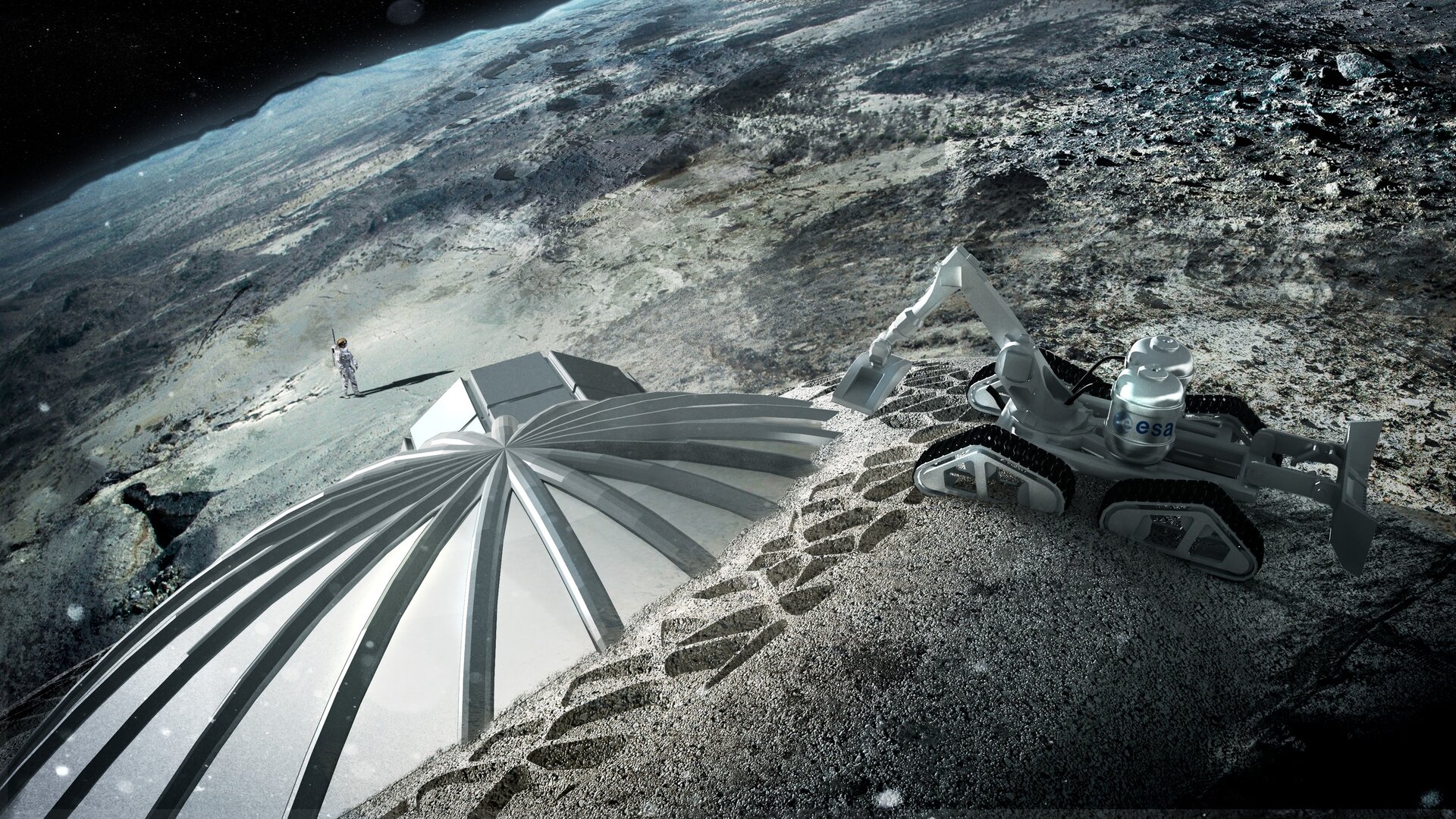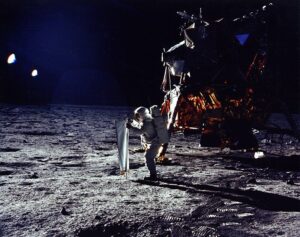In our emerging orbital environment, we will need to develop a greater understanding of the implications of human activities in space and their impacts on Earth and beyond. Humans already depend on off-world resources.
Almost all of our energy ultimately comes from the Sun, and we are protected from dangerous radiation by the magnetosphere that encircles our planet. The region just beyond our atmosphere has become a resource for communication, observation, and exploration.
But our ambition and our need for resources is greater still, the 2024 GESDA Science Breakthrough Radar® notes.
In the half-century since humans last landed on the Moon, rapid progress in science and technology has led to robotics and automation enabling the remote exploration of planets, moons, asteroids, and comets beyond our own Earth-Moon system.
In this same period, our population has doubled, while our use of resources has grown rapidly in quantity and diversity. The motivations for exploring the environment beyond Earth include enhancing scientific knowledge, mitigating hazards, and using extraterrestrial resources.

At right: A Japanese transfer vehicle approaches the International Space Station. (NASA)
Anticipating space mining, manufacturing, and peacekeeping capabilities
Our knowledge base is quickly expanding. In March, the new Euclid telescope, a European Space Agency (ESA) mission with Swiss participation, for the first time published detailed observations from its surveys of millions of galaxies in a short space of time.
“We are unlocking a treasure trove of information for scientists to dive into and tackle some of the most intriguing questions in modern science,” says ESA’s Director of Science, Prof. Carole Mundell.
Swiss research institutes including the University of Zürich, University of Applied Sciences and Arts Northwestern Switzerland, Swiss Federal Institute of Technology Lausanne (EPFL) and University of Geneva, are involved in the Euclid mission launched in 2023.
The Radar indicates, however, that living in space and establishing space-based power will require significant advancements in mining, manufacturing, and peacekeeping efforts for several reasons:
Resource extraction — As humanity expands its presence in space, particularly in environments like the Moon and near-Earth asteroids, mining will be essential to obtain natural resources such as water, metals, and other materials. These resources will be critical for sustenance, manufacturing, and constructing habitats and infrastructure necessary for life in space.
Space manufacturing — The Radar suggests that the conditions in space, such as microgravity and vacuum, present unique opportunities for manufacturing high-purity materials and advanced components. This capability will necessitate the development of space-based manufacturing processes that can use local resources efficiently, reducing reliance on Earth, and optimizing production for specific needs in space.
Power requirements — Establishing a sustainable power supply for industrial-scale manufacturing in space is a key challenge. The Radar highlights that while kilowatt power sources exist, megawatt scale operations will be necessary for meaningful industrial activities. This necessitates the development and deployment of robust energy generation methods, including potentially harnessing solar power in space.
Peacekeeping and governance — As competition for space resources intensifies, particularly among nations and private entities, the potential for conflict rises. The Radar emphasizes the need for international cooperation and peacekeeping mechanisms to manage disputes over resource rights and usage. Establishing frameworks for equitable resource distribution and sustainable practices will be crucial in mitigating conflicts in the increasingly crowded space environment.
Global coordination — The necessity for formal global governance structures is highlighted to ensure that space is used sustainably and peacefully. Protecting the orbital environment, currently viewed as a global commons akin to oceans or Antarctica, will require international collaboration and comprehensive legal frameworks to manage resource extraction, prevent militarization, and address issues like space debris.

At right: Euclid has been developed and built with contributions from ESA member nations, industry partners, scientific institutes and universities, and funding agencies. (ESA)
Orbital space flight is the new aviation frontier
The International Space Station (ISS) is set to be decommissioned by 2030, accompanied by a transition to commercial space stations starting before then. With that will come increasing efforts to privatize Low Earth Orbit (LEO), the region of space around Earth where satellites orbit relatively close the surface.
Typically, satellites orbit at altitudes between 160 and 1,600 kilometers (100 to 1,000 miles), a range that works well with applications like satellite imaging and communications.
Even small countries like Switzerland and Liechtenstein are getting into the act, setting up operations like the Center for Space and Aviation Switzerland and Liechtenstein (CSA) that can support and benefit from new private space stations expected to not only conduct research but fuel development and large-scale manufacturing.
“The Center for Space and Aviation is far more than a mere research collaboration — it embodies the vision and mission to shape the ‘New Space Economy’ for future generations,” says University of Zürich’s Prof. Dr. Elisabeth Stark.
Shaping space law and innovation
In early 2025, the Swiss Parliament, eager for the country to be in a position to shape the development of space governance, opened a public consultation for Switzerland’s first national space law.
The Vienna-based United Nations Office for Outer Space Affairs works to promote international cooperation in the peaceful use and exploration of space, and in using space science and technology for sustainable economic and social development.
In April, Swiss Federal Institute of Technology Zürich (ETH) Prof. Dr. Thomas Zurbuchen told the German Aerospace Society (DGLR) that the ETH Zurich I Space initiative aims to encourage students to found their own startups or to get involved with young companies, not just large corporations or space agencies.
“My vision is to strengthen entrepreneurial energy in Europe. Of course, there is already a strong startup scene in Europe, but we can do even more,” says Zurbuchen, a Swiss-American astrophysicist from Bern who served as NASA’s associate administrator for the Science Mission Directorate and managed a budget of nearly $8 billion.
“In research, we want to contribute to solutions for the many problems we must and should solve from space. To do this, we want to create opportunities and infrastructure for researchers at ETH and elsewhere in Switzerland.”
At right: US astronaut Buzz Aldrin erects a Swiss-designed solar wind composition experiment during the first Moon landing. (NASA)
Where the science and diplomacy can take us
The 2024 GESDA Science Breakthrough Radar®, distilling the insights of 2,100 scientists from 87 countries, anticipates that as we look toward living and thriving in space, mining and manufacturing capabilities will be indispensable, accompanied by a strong emphasis on international peacekeeping and cooperation to manage the dynamics of space expansion.
The findings in the 2024 Science Breakthrough Radar®
Based on the Radar, here’s where we stand in several important areas. Key Radar references:
→ 
→ 
→ 
→ 
→ 











